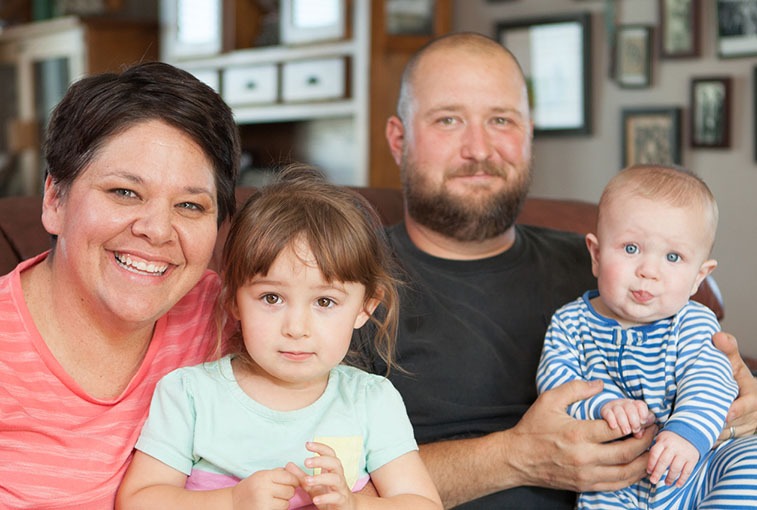No woman expects to face challenges during labor and delivery. Yet, sometimes an expectant mother experiences a high-risk pregnancy requiring a caesarean section.
According to the Centers for Disease Control (CDC), about 1 in 3 women in the U.S. give birth by C-section, and high-risk pregnancies have the highest C-section rates. While vaginal delivery is typically the best option, there are times –- like with Jennifer Tschetter –- when the best delivery option is a C-section.
“Some women will need it based on risk factors. The decision is based on what is best for mom and baby,” says Jeanne Hassebroek-Johnson, M.D., an OB/GYN at Sanford Health. “C-section is best when a baby is in the breech position with the buttocks coming first, if there is a fit problem, if mom has health risks, or if baby has complicating factors that make him or her unable to tolerate labor.”
A high-risk pregnancy
During her pregnancy, Jennifer was diagnosed with type 2 diabetes and high blood pressure. This created a whole new set of challenges. Instead of giving in to cravings, Jennifer was busy counting sugars, taking new medications and managing her personal health, while also adjusting to pregnancy and how life would change with a new baby.
Often, when a pregnancy becomes high risk, patients are referred to facilities like Sanford Health for specialty care or additional monitoring. Despite this, the institution’s caesarean section rate is extremely low compared to rates across the nation.
Dr. Hassebroek-Johnson says, “Our C-section rate for first-time moms, also called a primary C-section, is 13.5 to 14.5 percent, and our overall C-section rate is 28 percent. So when you compare that to national numbers, which have a primary C-section rate of 22 percent and an overall C-section rate of 32 percent, we are doing really well.”
A surprising delivery
As Jennifer was ready to deliver, her labor had complications that made caesarean section the safest option.
“We have protocols in place used by physicians and midwives regarding the appropriate progression of labor. So if someone is slowing down in her progress of labor, we use medications to give her every opportunity to dilate before resorting to a C-section,” explains Dr. Hassebroek-Johnson.
Still, in instances like Jennifer’s, a C-section can be unavoidable. After laboring for a long time, her baby’s heart rate kept dipping with each contraction. The baby was showing signs of distress, prompting immediate action from Jennifer’s care team.
Rather than a vaginal delivery, Jennifer’s baby needed an emergency C-section. Within a matter of minutes, Jennifer went from laboring next to her husband to an operating room.
“That was a very nerve‑wracking experience, but at the same time, I felt really confident. I wasn’t nervous,” says Jennifer. “I felt like being in the Sanford Health system throughout this whole pregnancy and all of the complications that came along with it, I had so much confidence that whomever was in that room was going to do a great job. And that kind of calm made that whole experience not as nerve‑wracking as it could’ve been.”
While physicians can reduce the rates, C-section is still an extremely valuable and effective option for some women and babies.
Learn more
- Appendicitis hastens baby’s delivery via C-section
- Know your birthing options after a C-section
- Things to consider when weighing a C-section
…
Posted In Health Information, Pregnancy, Women's
